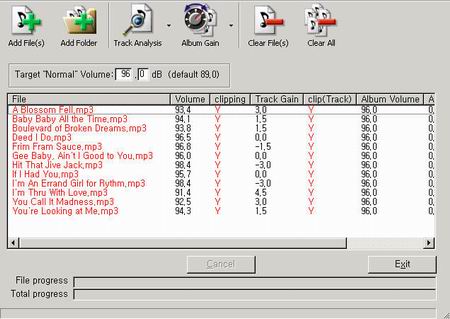
 Even conditions you’ve listen on, your room and how good it’s isolated (if it’s dead silent in the night you can obviously hear a lot more than at day with open window or at the airport field)Įver noticed how you can listen same music on speakers and headphones and for example “hear more” silent or “non-existent” details on headphones?Įven if you for example try to listen exactly same material with exactly same conditions including volume and with exactly same headphones models, but one would have impedance of 16 Ohm and other would have let’s say 120 Ohm…įirst one would scream in your ear, and second you would perceive generally as super-low volume and would need some serious amp to actually properly use them. Your Speakers / Headphones capabilities and quality. Volume settings on your audio-interface / amplifier. Audio subsystem and it’s internal settings like OS-level mixer if you haven’t bypassed it. No, well at least it depends on a lot of factors: Please teach me the meaning of the useful part. Video:0kB audio:503962kB subtitle:0kB other streams:0kB global headers:0kB muxing overhead: unknown Estimating duration from bitrate, this may be inaccurate $ ffmpeg -i 2019.9.16.mp3 -filter:a volumedetect -f null /dev/nullįfmpeg version n4.3.1 Copyright (c) 2000-2020 the FFmpeg developersĬonfiguration: -prefix=/usr -disable-debug -disable-static -disable-stripping -enable-avisynth -enable-fontconfig -enable-gmp -enable-gnutls -enable-gpl -enable-ladspa -enable-libaom -enable-libass -enable-libbluray -enable-libdav1d -enable-libdrm -enable-libfreetype -enable-libfribidi -enable-libgsm -enable-libiec61883 -enable-libjack -enable-libmfx -enable-libmodplug -enable-libmp3lame -enable-libopencore_amrnb -enable-libopencore_amrwb -enable-libopenjpeg -enable-libopus -enable-libpulse -enable-librav1e -enable-libsoxr -enable-libspeex -enable-libsrt -enable-libssh -enable-libtheora -enable-libv4l2 -enable-libvidstab -enable-libvmaf -enable-libvorbis -enable-libvpx -enable-libwebp -enable-libx264 -enable-libx265 -enable-libxcb -enable-libxml2 -enable-libxvid -enable-nvdec -enable-nvenc -enable-omx -enable-shared -enable-version3 For example if max_volume is -5 dB, you can increase up to 5 dB (though you might want to do a bit less than that) using the volume filter above, e.g: ffmpeg -i input.mp3 -filter:a "volume=4dB" output.mp3įfmpeg -i input.mp3 -filter:a volumedetect -f null /dev/null If max_volume is less than 0 dB, you can increase it. It will give you the mean and max volume in dB. This will probably create lots of noise in the output fileĮDIT2: To see how much it is safe to increase the volume you can run: ffmpeg -i input.mp3 -filter:a volumedetect -f null /dev/null If you want to force clipping you can override this safety behaviour: ffmpeg -i input.mp3 -filter:a "volume=50:replaygain_noclip=0" output.mp3
Even conditions you’ve listen on, your room and how good it’s isolated (if it’s dead silent in the night you can obviously hear a lot more than at day with open window or at the airport field)Įver noticed how you can listen same music on speakers and headphones and for example “hear more” silent or “non-existent” details on headphones?Įven if you for example try to listen exactly same material with exactly same conditions including volume and with exactly same headphones models, but one would have impedance of 16 Ohm and other would have let’s say 120 Ohm…įirst one would scream in your ear, and second you would perceive generally as super-low volume and would need some serious amp to actually properly use them. Your Speakers / Headphones capabilities and quality. Volume settings on your audio-interface / amplifier. Audio subsystem and it’s internal settings like OS-level mixer if you haven’t bypassed it. No, well at least it depends on a lot of factors: Please teach me the meaning of the useful part. Video:0kB audio:503962kB subtitle:0kB other streams:0kB global headers:0kB muxing overhead: unknown Estimating duration from bitrate, this may be inaccurate $ ffmpeg -i 2019.9.16.mp3 -filter:a volumedetect -f null /dev/nullįfmpeg version n4.3.1 Copyright (c) 2000-2020 the FFmpeg developersĬonfiguration: -prefix=/usr -disable-debug -disable-static -disable-stripping -enable-avisynth -enable-fontconfig -enable-gmp -enable-gnutls -enable-gpl -enable-ladspa -enable-libaom -enable-libass -enable-libbluray -enable-libdav1d -enable-libdrm -enable-libfreetype -enable-libfribidi -enable-libgsm -enable-libiec61883 -enable-libjack -enable-libmfx -enable-libmodplug -enable-libmp3lame -enable-libopencore_amrnb -enable-libopencore_amrwb -enable-libopenjpeg -enable-libopus -enable-libpulse -enable-librav1e -enable-libsoxr -enable-libspeex -enable-libsrt -enable-libssh -enable-libtheora -enable-libv4l2 -enable-libvidstab -enable-libvmaf -enable-libvorbis -enable-libvpx -enable-libwebp -enable-libx264 -enable-libx265 -enable-libxcb -enable-libxml2 -enable-libxvid -enable-nvdec -enable-nvenc -enable-omx -enable-shared -enable-version3 For example if max_volume is -5 dB, you can increase up to 5 dB (though you might want to do a bit less than that) using the volume filter above, e.g: ffmpeg -i input.mp3 -filter:a "volume=4dB" output.mp3įfmpeg -i input.mp3 -filter:a volumedetect -f null /dev/null If max_volume is less than 0 dB, you can increase it. It will give you the mean and max volume in dB. This will probably create lots of noise in the output fileĮDIT2: To see how much it is safe to increase the volume you can run: ffmpeg -i input.mp3 -filter:a volumedetect -f null /dev/null If you want to force clipping you can override this safety behaviour: ffmpeg -i input.mp3 -filter:a "volume=50:replaygain_noclip=0" output.mp3 
Thus, save your input file.ĮDIT: By default, ffmpeg somewhat prevents clipping, so it should not increase the volume by more than it should (though, upon testing, I’ve had mixed results). Clipping is destructive, so when you increase the volume beyond what is good, decreasing the volume will not fix the issue. You can also use "volume=-5dB" to decrease the volume.īeware of clipping, which is an ugly distortion in the sound brought about by increasing the volume above the maximum that the waveform can hold. You can also use dB (decibels) to specify volume: ffmpeg -i input.mp3 -filter:a "volume=5dB" output.mp3 multiply by 1.25, multiplying by a number less than one will decrease the volume). This will increase the volume of input.mp3 (obviously, replace with the actual file name) by 25% (i.e.

ffmpeg -i input.mp3 -filter:a "volume=1.25" output.mp3







 0 kommentar(er)
0 kommentar(er)
